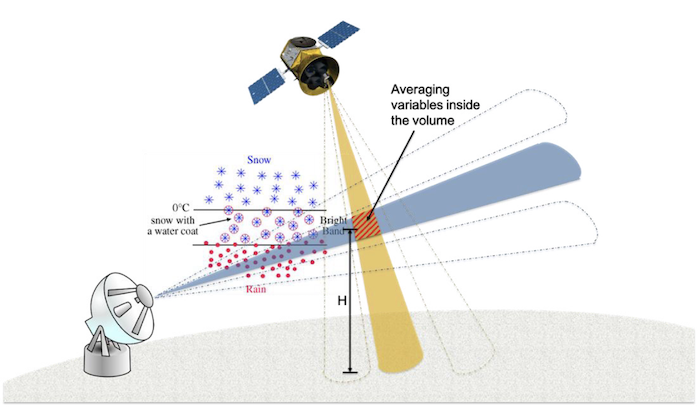
Measurement Dual-frequency Precipitation Radar and Ground Radar.
WEN – Joint collaboration on comparing NOAA’s ground-based weather radar and NASA-JAXA’s spaceborne radar
Zhi Li, Yixin Wen, Liang Liao, David Wolff, Robert Meneghini, Terry Schuur
Article first published online: 9 March 2023
DOI: https://doi.org/10.1175/BAMS-D-22-0127.1
ABSTRACT: The National Aeronautics and Space Administration (NASA) and National Oceanic and Atmospheric Administration (NOAA) have a long and successful history of weather radar research. The NOAA ground-based radars – WSR-88D network – provide nationwide precipitation observations and estimates with advanced polarimetric capability. As a counterpart, the NASA-JAXA space-borne radar – the GPM/DPR (Global Precipitation Measurement Dual-frequency Precipitation Radar) – has global coverage and higher vertical resolution than ground-based radars. While significant advances from both NOAA’s WSR-88D network and NASA-JAXA’s spaceborne radar DPR have been made, no systematic comparisons between the WSR-88D network and the DPR have been done. This study for the first time generates nationwide comprehensive comparisons at 136 WSR-88D radar sites from 2014 to 2020. Systematic differences in reflectivity are found, with ground radar reflectivity on average 2.4 dB smaller than that of the DPR (DPR Version 6). This research found the discrepancies between WSR-88D and DPR arise from different calibration standards, signal attenuation correction, and differences in the ground and space-borne scattering volumes. The recently updated DPR Version 7 product improves rain detection and attenuation corrections, effectively reducing the overall average WSR-88D and DPR reflectivity differences to 1.0 dB. The goal of this study is to examine the systematic differences of radar reflectivity between the NOAA WSR-88D network and the NASA-JAXA spaceborne radar DPR, and to draw attention to radar-application users in recognizing their differences. Further investigation into understanding and alleviating the systematic bias between the two platforms is needed.
Read the full publication in Bulletin of the American Meteorological Society.